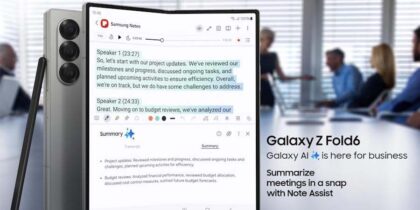Frost & Sullivan recently completed our annual look at the state of enterprise mobility, a global survey in which we interviewed almost 2,000 IT decision makers about their current use of technology and their plans for the future. Here’s a peek at the data we gathered around the top trends in the mobile workforce — an issue that’s top of mind for most participants, who routinely tell us that enabling a mobile workforce is among their biggest IT and business priorities.
Today, 98 percent of enterprises report that employees use smartphones for business purposes; 93 percent use tablets; and 75 percent use wearable tech such as smartwatches and glasses. Still, in only 20 percent of businesses do most employees use smartphones provided by the organization; in the rest, they’re mainly provided (and paid for) by the employee. Because this opens businesses up to security and control risks, Frost & Sullivan strongly recommends that organizations of all sizes and types supply enterprise-grade devices, apps and services to their workers.
Tablets paint a slightly different picture. They’re less likely to be used by a large number of employees, but more likely to be purchased and deployed to workers by the business. The trend makes sense when you consider that fewer people own tablets than own phones, so if tablets are required on the job — and more and more companies are integrating them into their business processes, especially around field service, support and other off-site operations — then companies must provide them.
Still, while the majority of businesses pay for and support at least some percentage of their employees’ mobile devices and the apps and services that run on them, only 15 percent of survey respondents expect the use of personal hardware and software to decline in the next two years, while almost half expect the “bring your own technology” (BYOT) trend to grow within their organizations.
The Android operating system is by far the most popular for enterprise mobility: About 37 percent of company-owned smartphones use Android, as opposed to the roughly 24 percent that use iOS or others. That holds true in the BYOT arena as well, with around 33 percent of employee-owned smartphones running on Android, compared with around 26 percent on iOS.
Respondents say that, on average, they spend around 12 percent of their IT budgets on mobile devices and applications; the third-highest budget allocation after security and infrastructure. Clearly, companies are getting the message — taking a mobile-first approach to business, technology and applications is critical for success in 2016 and beyond.
As millennials reshape the modern workforce, today’s business leaders must utilize technology in increasingly innovative ways to foster collaboration and drive productivity.








